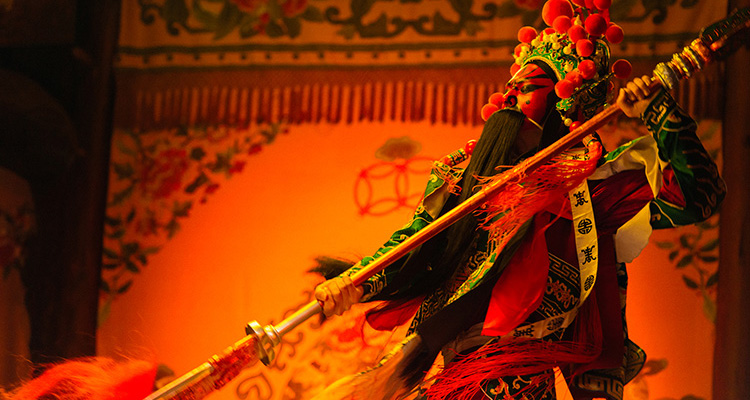Peking Opera: A Beginner’s Guide to China’s Traditional Art
1. What Is Peking Opera? – Definition and First Impressions
Peking Opera, often referred to as “China’s national opera,” is a mesmerizing fusion of music, dance, drama, and visual art. Imagine sitting in a historic theater as the stage bursts into vibrant colors: performers in exquisite silk costumes, faces adorned with symbolic makeup, and the air filled with powerful arias and rhythmic drumbeats. At first glance, you’ll be struck by the vivid reds, golds, and blues; at first listen, the unique melodies and rhythms will captivate you. This isn’t just a performance—it’s a sensory journey into the heart of Chinese culture.

2. The Story Behind Peking Opera – History and Cultural Significance
Peking Opera originated in Beijing in the late 18th century, emerging from a blend of regional Chinese operas. It reached its peak during the Qing Dynasty, becoming a favorite in both imperial courts and among the general public. The stories told in Peking Opera are more than entertainment; they carry deep cultural meanings, often revolving around themes like loyalty, love, and justice. Each performance serves as a window into China’s rich history and philosophical traditions.

3. How Is Peking Opera Created and Performed? – Techniques and Elements
Creating a Peking Opera performance is an intricate process involving several key elements:
- Costumes and Makeup: Actors wear elaborate silk costumes, and their faces are painted with symbolic patterns. For instance, red signifies loyalty, while white indicates treachery.
- Role Types: There are four main character types: Sheng (male roles), Dan (female roles), Jing (painted-face roles), and Chou (comic roles).
- Performance Techniques: The art form combines singing, reciting, acting, and martial arts. Movements are stylized, and gestures often carry specific meanings, allowing the audience to understand the character’s emotions and intentions.
These elements come together to create a performance that is both visually stunning and emotionally resonant.

4. How to Appreciate and Engage with Peking Opera
To truly appreciate Peking Opera, pay attention to the facial makeup, which conveys character traits; the actor’s body language, which expresses emotions; and the vocal style, which varies between roles. Understanding these aspects will enhance your viewing experience.
For a more interactive experience, consider visiting a theater in Beijing where you can try on costumes, learn basic movements, or even paint a face mask. Popular performances like Farewell My Concubine and The Legend of the White Snake are rich in storytelling and will immerse you in the drama.

5. Where to Experience Peking Opera in Beijing
Peking Opera is recognized by UNESCO as an Intangible Cultural Heritage and continues to thrive in Beijing. Here are some venues where you can experience it:
- Liyuan Theatre: Offers nightly performances with English subtitles, making it accessible for international audiences.
- National Centre for the Performing Arts: Hosts grand productions with state-of-the-art facilities.
- Mei Lanfang Grand Theatre: Named after the legendary Peking Opera artist, it offers a traditional atmosphere.
- Laoshe Tea House: Provides a more casual setting with daily performances, allowing for a relaxed introduction to the art form.
Each venue offers a unique experience, so choose one that best fits your interests and schedule.


